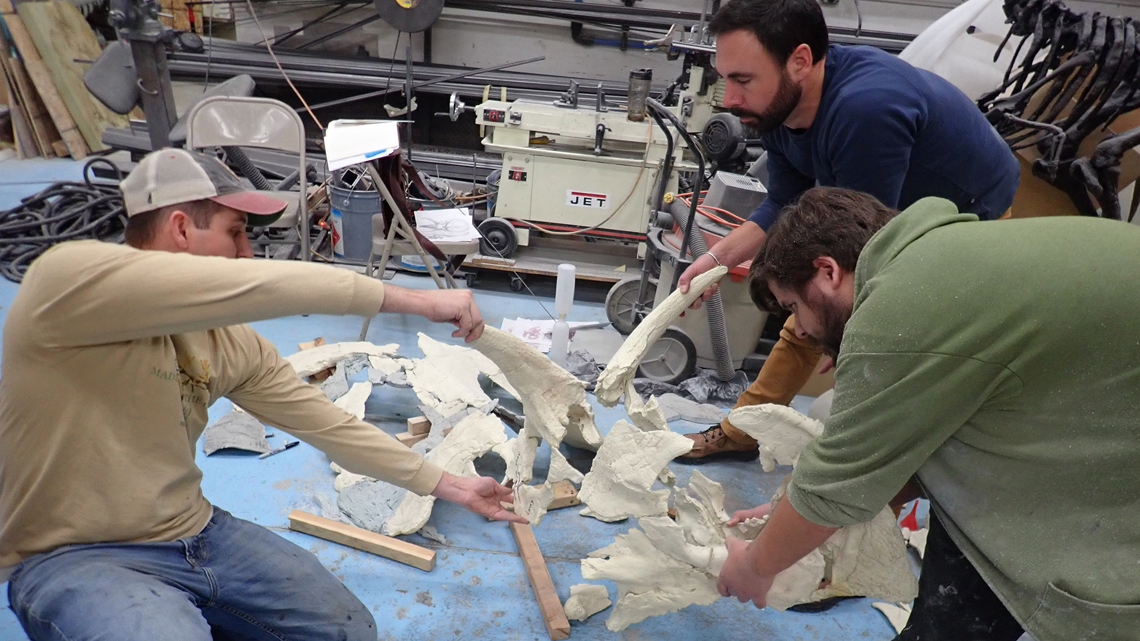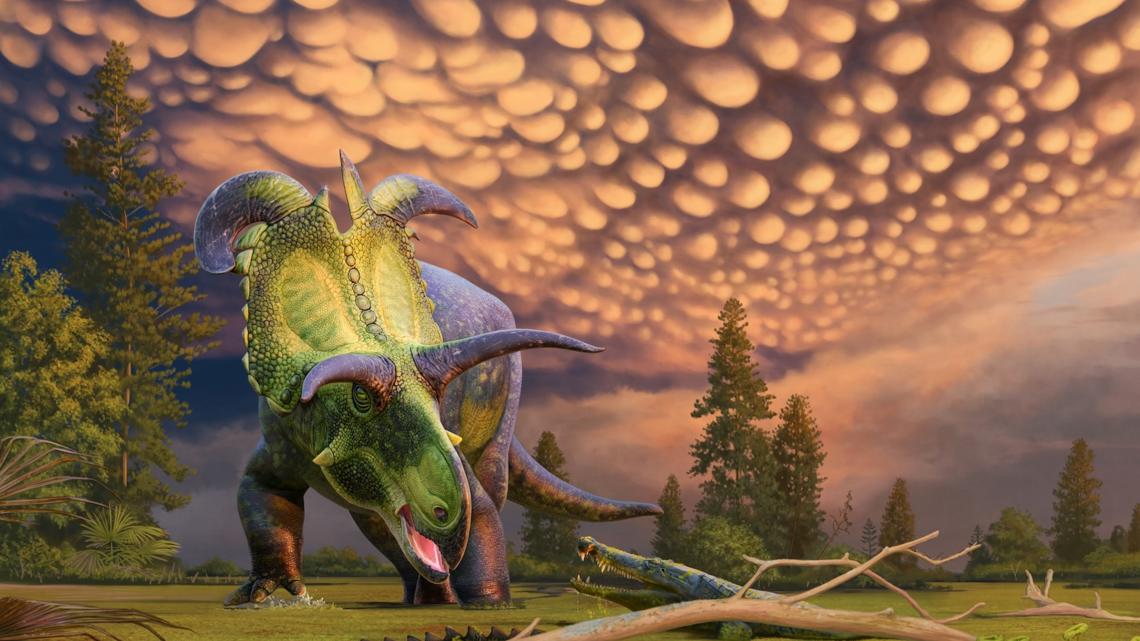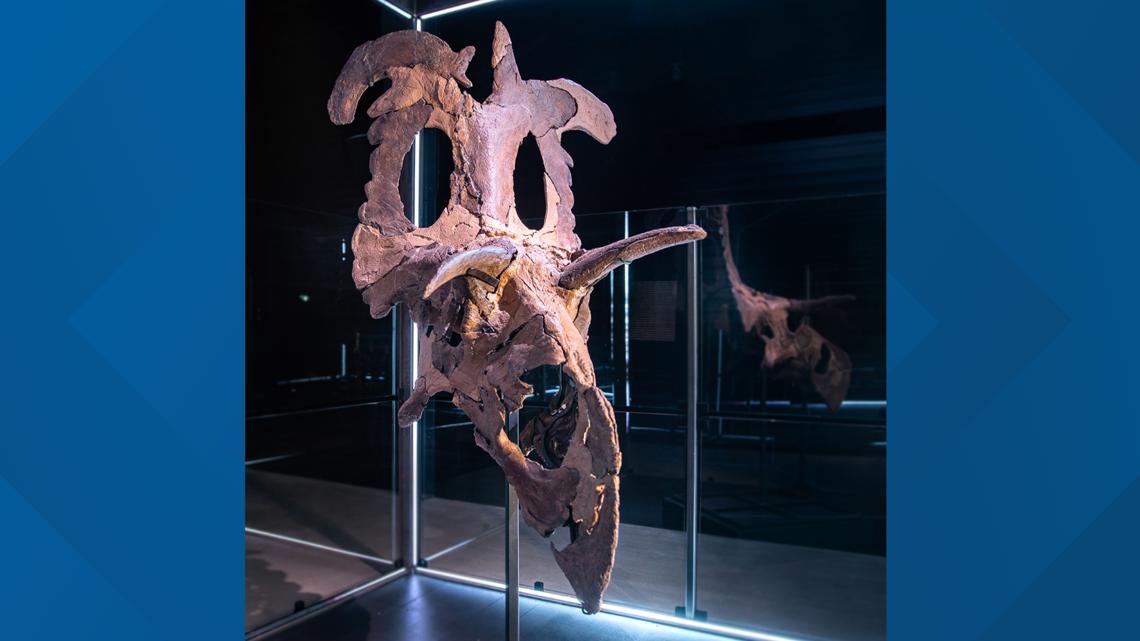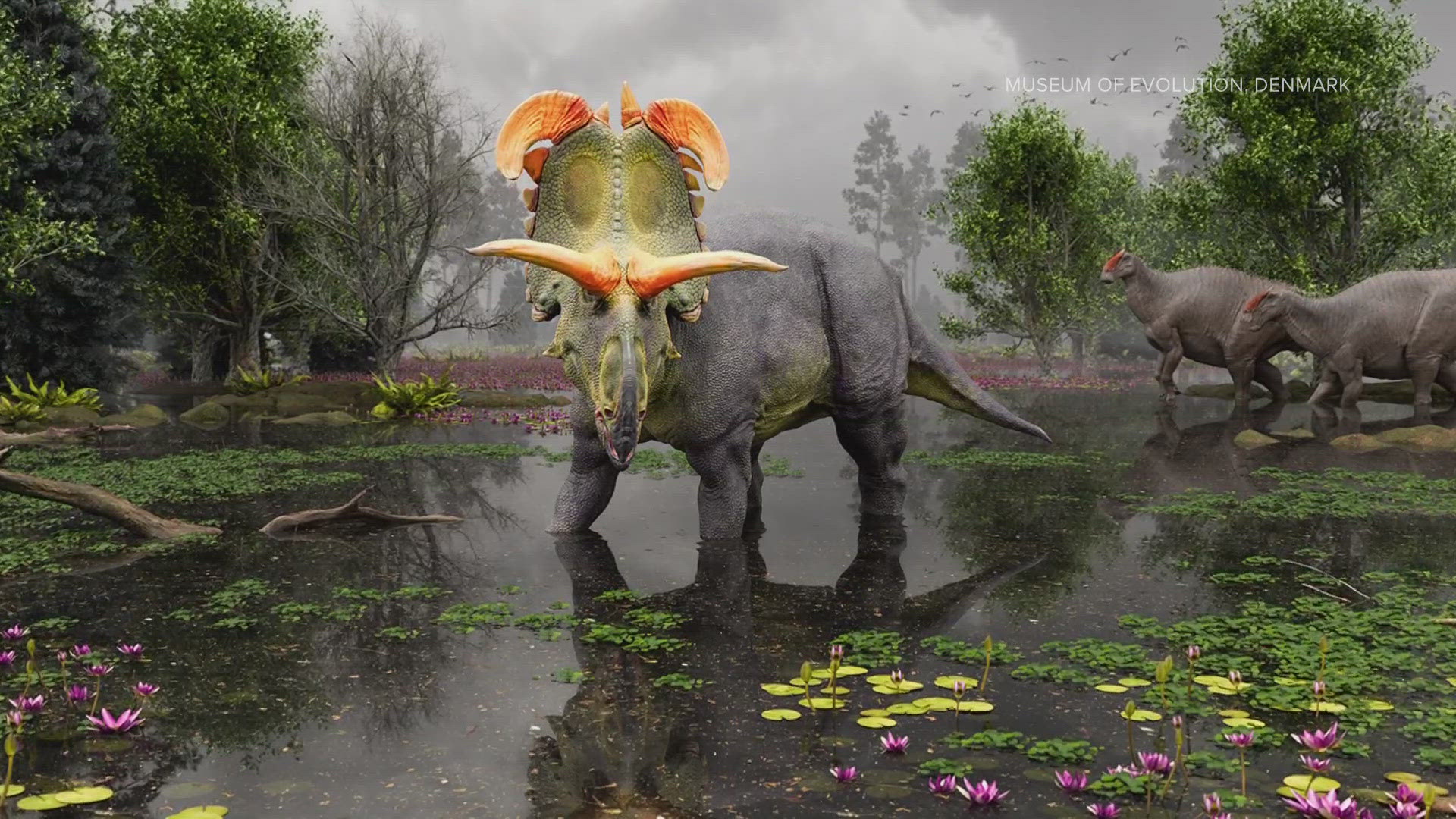FORT COLLINS, Colo. — A Colorado State University scientist helped identify a new dinosaur — a 78-million-year-old ancestor of the Triceratops, the university said on Thursday in a news release.
The Lokiceratops rangiformis, a horned herbivore, was identified and named by CSU affiliate faculty member Joseph Sertich and University of Utah professor Mark Loewen. The dinosaur was discovered five years ago in the badlands of northern Montana, just south of the U.S.-Canada border, according to the release.
Sertich and Loewen, who helped reconstruct the dinosaur using small skeleton fragments, realized what they had discovered was an entirely new species once they were able to put together its skull. The fossil had unusual dimensions and characteristics.


The Lokiceratops is reportedly the largest of all centrosaurines, a group of horned dinosaurs, ever found in North America. It has an estimated height of 22 feet and a weight of 11,000 pounds, and on its head are "the largest frill horns ever seen on a horned dinosaur," the release said.
The dinosaur's horns are huge in a figurative sense, too. The discovery of the Lokiceratops, whose bones were found in the same rock layer as four other species, revealed that scientists had underestimated diversity within the horned dinosaur group.
"It's unheard-of diversity to find five living together, similar to what you would see on the plains of East Africa today with different horned ungulates,” Sertich said in the release.


The importance of its horns partially explains why its name, announced Thursday in the scientific journal PeerJ, roughly translates to "Loki's horned face that looks like a caribou."
But what's behind the reference to the Norse god that also appeared as a character in the Marvel Cinematic Universe?
“The dinosaur now has a permanent home in Denmark, so we went with a Norse god, and in the end, doesn't it just really look like Loki with the curving blades?” Loewen said.
The Lokiceratops' skull is being displayed at the Museum of Evolution in Denmark, where Loewen and Sertich are scientific consultants.


Sertich was raised in Colorado and earned his bachelor of science from CSU in 2004. He reportedly started working on the Lokiceratops while teaching as an affiliate faculty member in the geosciences department at his alma mater's Warner College of Natural Resources.
He was the curator of dinosaurs at the Denver Museum of Nature and Science and has been involved in identifying more than 20 dinosaurs, according to the release.
SUGGESTED VIDEOS: Animals and Wildlife

